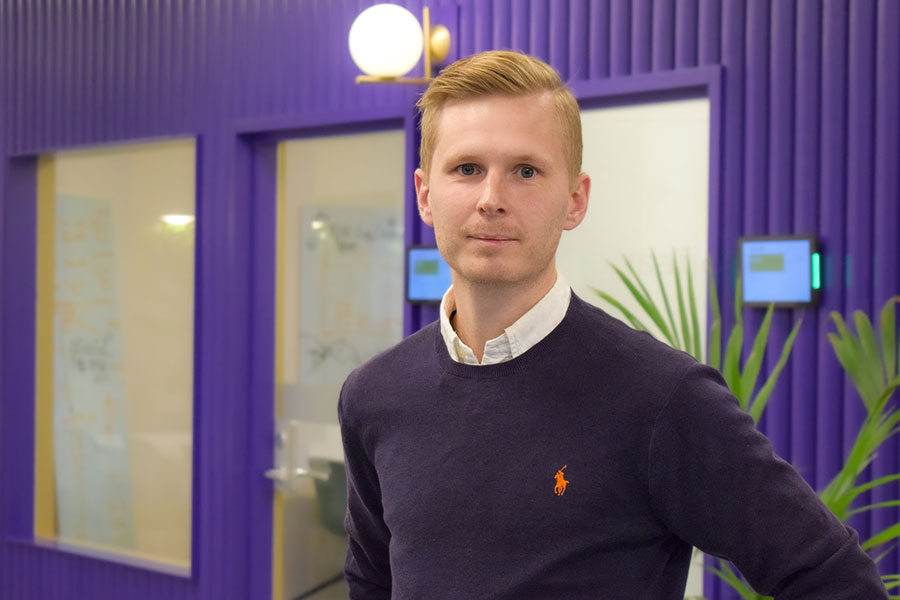Johan designs next-generation mobile networks
Johan Lundgren graduated from the master's programme in Electromagnetics, Fusion and Space Engineering in 2020. He is now working at Cellmax, a Swedish developer and manufacturer of antennas used for base stations in mobile networks.

How he got his first job
One year before graduating, Johan got a summer internship with Cellmax. He had heard they had interns from KTH before, so he contacted them directly.
"Even though they didn't have a specific project for me, they welcomed me with open arms," Johan says.
During his last semester at KTH, Johan did his degree project with Saab. Once he graduated, they offered him a position, which he accepted.
"I worked with analysing how antennas affect each other and other systems. For example, I tested how the antennas interact when placing them on an aeroplane."
Then one day, Cellmax called and asked if Johan wanted to join them again.
"I considered the pros and cons. I knew the development team were much more experienced than I was, so I was a bit worried I would be the young and inexperienced one. But in the end, Cellmax offered a lot more responsibility and the possibility to further develop my own ideas."
From idea to product
One idea was developing better mobile network antennas. Feedback from customers and Cellmax's sales department revealed a demand for smaller antennas, increased bandwidths and higher functionality. With that in mind, Johan got to work.
"Our competitors have developed more efficient products. It was time for us to evolve as well without compromising performance and quality.”
In one year, the project passed through a pilot study and the development process, and Cellmax began producing prototypes.
"Now evaluating and improving the physical products awaits. I look forward to seeing my idea become an actual ready-for-market product.”
What a typical day looks like
On a typical day, Johan runs simulations and analyses the result of tests. He gathers information and creates solutions and improvements for further tests.
"It could mean changes in a computer-aided design model or physical changes to a prototype. You could say it's like the whack-a-mole 'green frogs' attraction at Gröna Lund. When we have a solution to one challenge – a new one pops up. But it's just as fun and educational.
Johan's closest co-workers are his fellow developers and mechanical engineers.
"They usually have a different perspective and are specified in the mechanical way of doing things. I guess you could compare it with an architect and a carpenter. Sometimes I have ideas that aren't physically possible to fulfil. It's good to be challenged beyond the boundaries of my expertise."
Lessons from KTH
Johan looks back at his time at KTH with joy. The most important insight is understanding how electromagnetic fields work. The theory behind it is something he applies in his practical work every day.
"We were given the opportunity to experience and learn how different setups affected the results."
One course stood out: Applied antenna theory with Professor Oscar Quevedo-Teruel.
"I learned how to study an antenna and better understand how it radiates and at what frequency."
Thoughts on the future
Looking ahead, Johan is convinced he has found his calling in his professional life. There is a growing need for wireless communication, which means added investments in research and development.
"The market calls for higher frequencies and increased capacity on mobile networks. This requires both research and product development."
Johan hopes to continue to be working in the midst of this exciting change.
"I would love to keep solving problems, innovate and act between development and research. That's where I thrive," he says.
